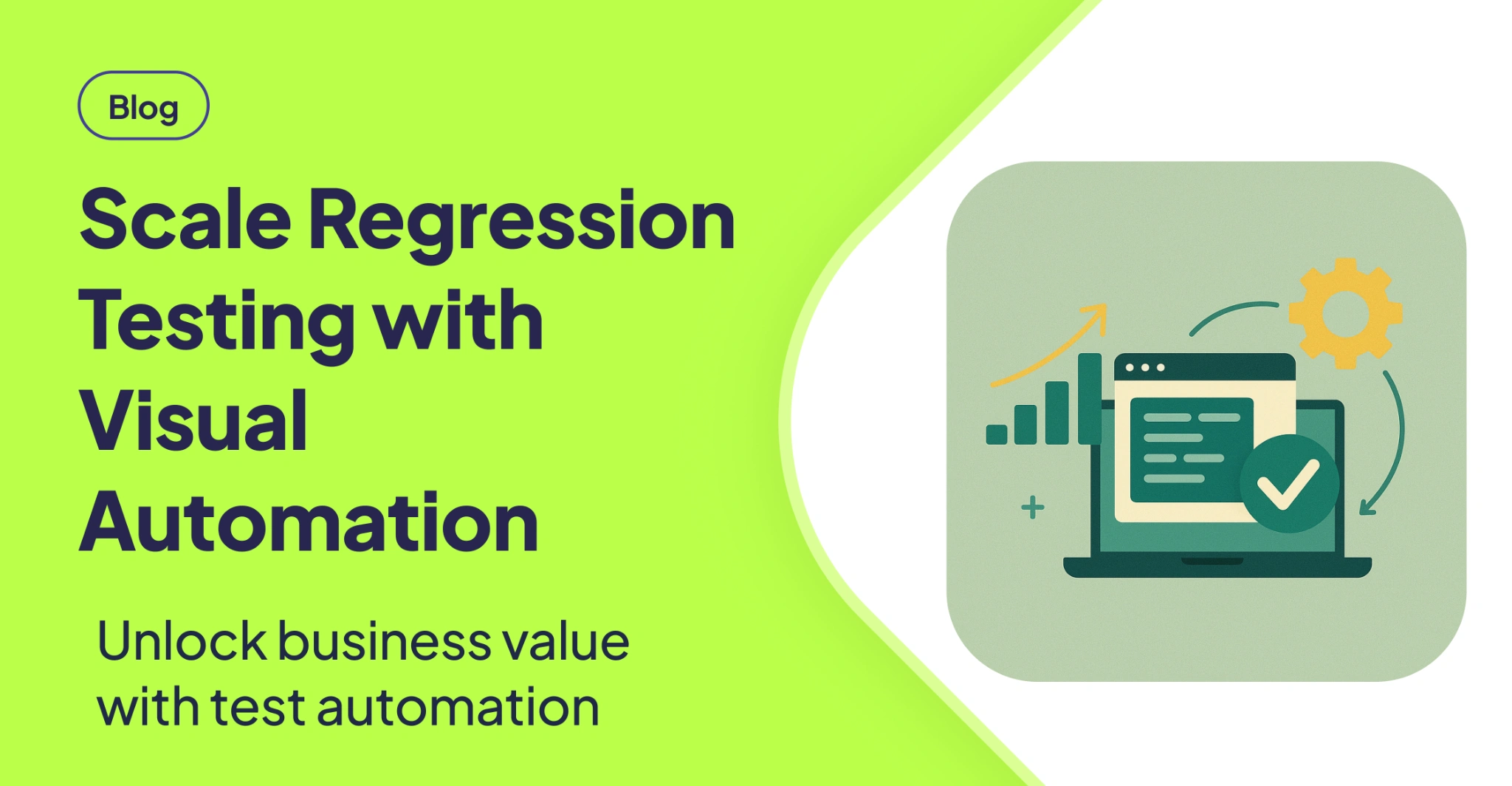The Business Benefits of Automated Regression Testing
In the race to deliver high-quality software faster, regression testing has become a crucial step in modern development cycles. But doing it manually? That’s no longer sustainable.
🧠 See how Zucchetti scaled their testing with visual automation →
👉 Read their success story
Manual regression testing slows down releases, increases costs, and introduces human error. As your application grows in complexity, your test suite grows with it and running it manually becomes a bottleneck.
Enter automated regression testing. It’s not just a time-saver; it’s a strategic business advantage.
What Is Regression Testing?
Regression testing ensures that existing functionality continues to work after code changes. Whether it's a bug fix, a new feature, or a refactor, regression tests catch unexpected side effects. It’s your safety net.
But as products scale, running a full suite of regression tests manually becomes increasingly time-consuming. The cost in QA hours alone can be staggering.
Why Automate Regression Tests?
1. Speed and Efficiency
Automated tests run in minutes, not hours. They can run in parallel, overnight, and during deployments something manual testing simply can’t keep up with.
2. Improved Test Coverage
With automation, teams can run more tests more often. This means edge cases and low-priority paths don’t get ignored just because “there wasn’t enough time.”
3. Cost Reduction
While there’s an upfront investment in setting up automated tests, the long-term savings are huge. QA teams can focus on exploratory and UX testing instead of repeating the same regression scripts.
4. Consistency and Reliability
Automation removes the variable of human error. Tests execute the same steps every time, catching bugs that might otherwise slip through inconsistent manual testing.
5. Faster Feedback Loops
In CI/CD environments, immediate feedback is gold. Automated regression tests provide near-instant insights into whether a build is stable or not.
Business-Level Benefits
- Faster Time-to-Market: Automated regression lets you release updates faster with confidence.
- Higher Product Quality: Catch regressions before customers do—protecting your brand and bottom line.
- Scalability: As your product grows, your QA process scales with it.
- Team Productivity: Developers and testers spend less time fixing issues caused by broken old code.
- Customer Trust: Fewer bugs in production means more trust, better reviews, and lower churn.
But What About Complex Interfaces—Like Canvas-Based UIs?
Automating regression tests for complex UIs, such as canvas-based applications, has historically been difficult. These apps don’t use the DOM or standard element identifiers so traditional tools fall short.
That’s where AskUI delivers real value. Instead of relying on selectors or internal code structure, it understands the interface visually mimicking how real users experience the application. This vision-driven approach makes it ideal for automating tests on dynamic, graphics-heavy UIs where conventional tools simply fail.
Zucchetti, a global enterprise software provider, didn’t just automate they scaled their testing with AskUI to cover workflows others couldn’t. From pixel-based UIs to dynamic content, their story shows what’s possible when visual automation meets real business needs.
Final Thoughts
Automated regression testing isn’t just a QA upgrade it’s a business enabler. Faster releases, better quality, and happier customers all stem from reliable, scalable testing.
If your current process is slowing you down or missing bugs, now’s the time to modernize.
👉 Want to see how automation can really scale? Read Zucchetti’s success story and imagine what AskUI could do for your team.



.png)
.png)
.png)


